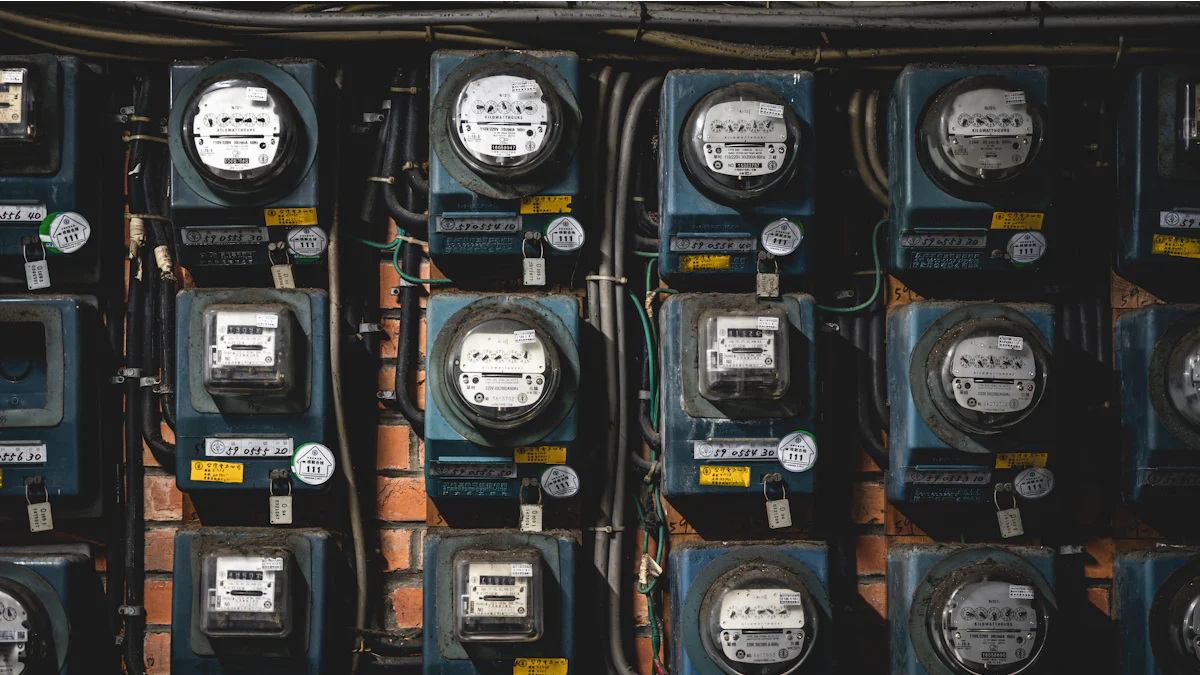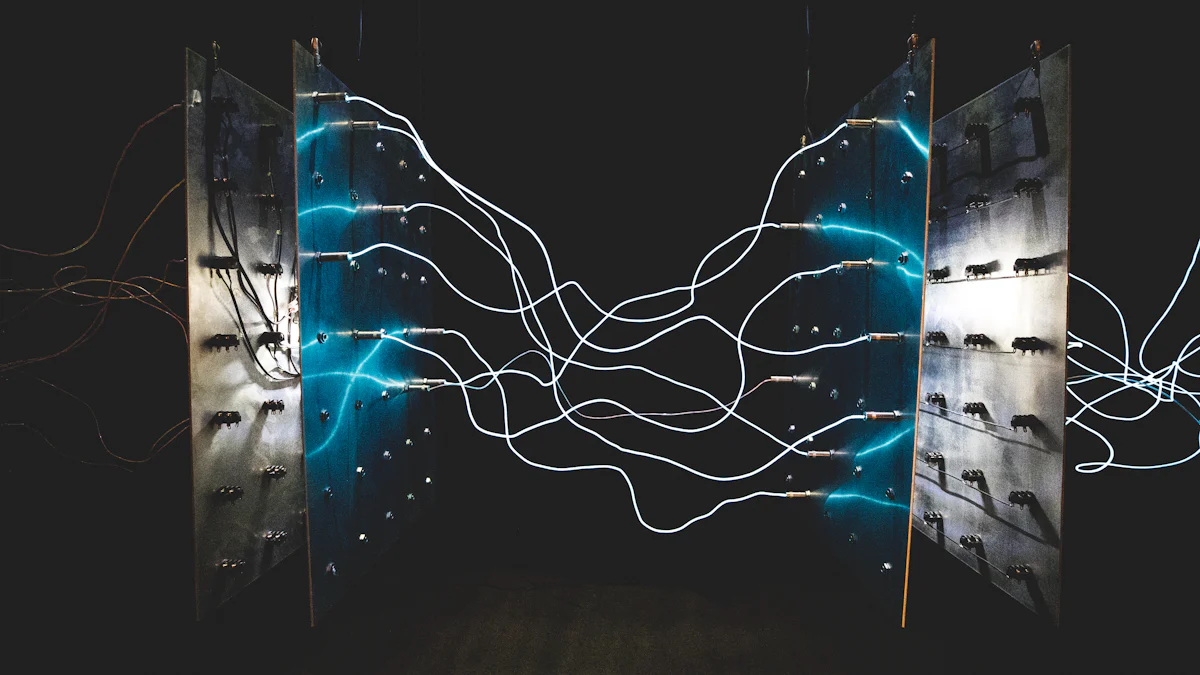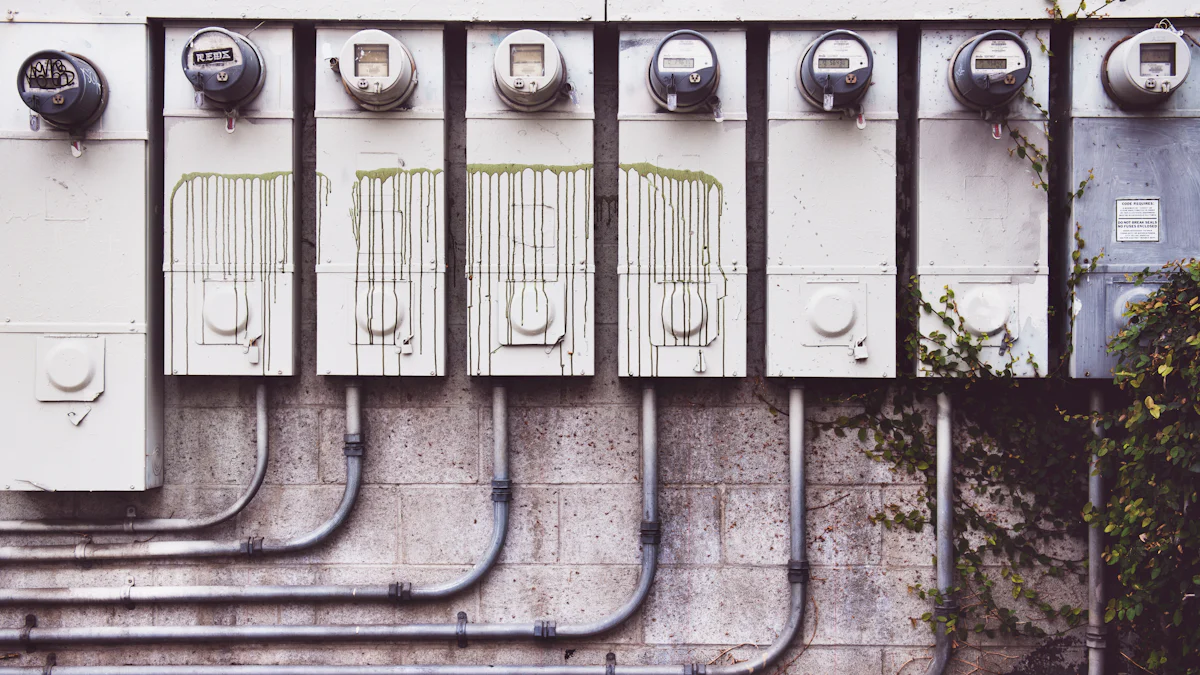DIN Rail Energy Meters vs Traditional Meters
DIN Rail Energy Meters vs Traditional Meters

Image Source: unsplash
Energy meters play a crucial role in managing your energy consumption efficiently. They provide detailed insights into how much energy you use, helping you make informed decisions to save costs and conserve resources. With the rise of smart technologies, comparing DIN Rail Energy Meters and traditional meters becomes essential. DIN Rail Energy Meters, like those from DDKJ, offer advanced features that enhance energy management. Understanding these differences empowers you to choose the right meter for your needs, ensuring optimal energy usage and cost-effectiveness.
Understanding DIN Rail Energy Meters

Image Source: unsplash
Features of DIN Rail Energy Meters
Design and Mounting
DIN Rail Energy Meters, such as those from DDKJ, offer a compact and efficient design. You can easily mount these meters on a standard DIN rail, which simplifies installation. This design not only saves space but also ensures a neat and organized setup in electrical panels. The DIN Rail Energy Meter exemplifies this with its sleek design tailored for easy integration into existing systems.
Functionality and Applications
These meters excel in functionality. They measure energy consumption accurately and provide real-time data. You can use them in various applications, from residential to commercial settings. The model, for instance, includes an RS485 communication interface. This feature allows you to connect it to other systems, enhancing its utility in energy management. The configurable Modbus RTU protocol further expands its adaptability, making it suitable for diverse environments.
Benefits of Using DIN Rail Energy Meters
Accuracy and Reliability
DIN Rail Energy Meters are known for their precision. They deliver accurate readings, which help you monitor energy usage effectively. This accuracy reduces the risk of errors in billing and energy management. The reliability of these meters ensures consistent performance over time, providing you with dependable data for decision-making.
Space Efficiency
Space efficiency is a significant advantage of DIN Rail Energy Meters. Their compact design allows you to fit them into tight spaces without compromising functionality. This feature is particularly beneficial in environments where space is limited, such as small residential panels or crowded commercial setups.
Example: DN175 Model
Key Specifications
The DN175 Single-phase LCD IOT DIN-rail Energy Meter stands out with its advanced features. It includes a high-quality LCD display that shows clear energy usage readings. The meter supports bidirectional metering, allowing you to track both forward and reverse energy flow. This capability helps prevent energy theft and ensures comprehensive monitoring.
Use Cases
You can use the DN175 model in various scenarios. Its programmable settings let you customize energy management according to your needs. Whether in a residential setting or a commercial environment, this meter adapts to different requirements. The support for multiple tariff tables and time zones enables you to optimize energy usage and reduce costs effectively.
Exploring Traditional Meters
Characteristics of Traditional Meters
Design and Installation
Traditional meters have a straightforward design. You typically find them mounted on walls or poles. Their installation process is simple, often requiring basic tools. These meters usually feature analog displays with rotating dials, making them easy to read. You can rely on their durability, as they are built to withstand various environmental conditions.
Common Applications
You often see traditional meters in residential settings. They serve well in homes where advanced features aren't necessary. Many small businesses also use them for basic energy monitoring. Their simplicity makes them suitable for areas with limited technological infrastructure.
Advantages of Traditional Meters
Cost-Effectiveness
Traditional meters offer a cost-effective solution. Their initial purchase price is lower compared to advanced models. You save money on installation and maintenance, as they require minimal upkeep. This affordability makes them an attractive option for budget-conscious users.
Ease of Use
You will find traditional meters easy to use. Their analog displays provide clear readings without complex interfaces. You don't need specialized knowledge to operate them. This simplicity ensures that anyone can monitor energy consumption without hassle.
Direct Comparison: DIN Rail vs Traditional Meters

Image Source: unsplash
Accuracy and Precision
Measurement Capabilities
When you choose a meter, accuracy is crucial. DIN rail energy meters, like those from DDKJ, offer precise measurement capabilities. They provide real-time data, ensuring you get exact readings of your energy consumption. Traditional meters, however, often rely on analog displays, which can lead to less precise measurements.
Error Margins
DIN rail energy meters have minimal error margins. This precision helps you avoid billing discrepancies and ensures reliable data for energy management. Traditional meters may have larger error margins due to their mechanical components, which can wear over time.
Installation and Maintenance
Ease of Installation
Installing a DIN rail energy meter is straightforward. You can easily mount it on a standard DIN rail, saving space and time. This design makes it ideal for both residential and commercial setups. Traditional meters require more effort to install, often needing wall or pole mounting, which can be more cumbersome.
Maintenance Requirements
DIN rail energy meters require minimal maintenance. Their digital design reduces the need for frequent checks. You can rely on their durability and consistent performance. Traditional meters, with their mechanical parts, may need more regular maintenance to ensure accuracy.
Cost Analysis
Initial Investment
The initial cost of a DIN rail energy meter might be higher than a traditional meter. However, the advanced features and precision justify the investment. Traditional meters offer a lower upfront cost, making them appealing if you're on a tight budget.
Long-term Costs
Over time, DIN rail energy meters can save you money. Their accuracy reduces billing errors, and their low maintenance needs decrease ongoing costs. Traditional meters might incur higher long-term expenses due to potential inaccuracies and maintenance requirements.
Functionality and Adaptability
When you consider energy meters, functionality and adaptability become crucial factors. DIN rail energy meters, especially those from DDKJ, offer advanced features that enhance their utility in various settings.
Advanced Features
DIN rail energy meters come equipped with a range of advanced features. These features include real-time data monitoring, which allows you to track energy consumption accurately. The DDKJ models often support communication protocols like Modbus RTU, enabling seamless integration with other systems. This capability ensures that you can manage energy usage efficiently, whether in a residential or commercial environment. Additionally, these meters often include programmable settings, allowing you to customize energy management according to your specific needs.
Scalability
Scalability is another significant advantage of DIN rail energy meters. As your energy needs grow, you can easily expand your system by adding more meters. The compact design of DIN rail meters makes it simple to integrate additional units without requiring extensive modifications to your existing setup. This flexibility ensures that your energy management system can adapt to changing demands, providing a future-proof solution for your energy monitoring needs.
In this comparison, you have seen how DIN Rail Energy Meters and traditional meters differ in design, functionality, and cost. DIN Rail meters, like those from DDKJ, offer precision, advanced features, and scalability. Traditional meters provide simplicity and cost-effectiveness.
 English
English
How Does an Energy Meter Work
An energy meter is a vital device used to measure the amount of electrical energy consumed by a home, business, or industrial facility. As electricity usage continues to rise across the world, understanding how an energy meter works helps consumers make smarter decisions about energy efficiency and cost management.
Read MoreHow to Read an Energy Meter
Understanding how to read an energy meter is an important step toward managing electricity consumption effectively. Whether you’re a homeowner, business owner, or energy professional, learning to interpret your meter readings can help you monitor usage, reduce costs, and identify opportunities to improve energy efficiency. With both analog and digital models in use today, the method of reading an energy meter depends on the type of device installed.
Read MoreHow Do Energy Meters Work
An energy meter is a crucial device used to measure and record the amount of electrical energy consumed by a home, business, or industrial facility. As the global focus on energy efficiency and smart power management increases, understanding how energy meters work has become essential for both consumers and professionals in the energy sector.
Read More